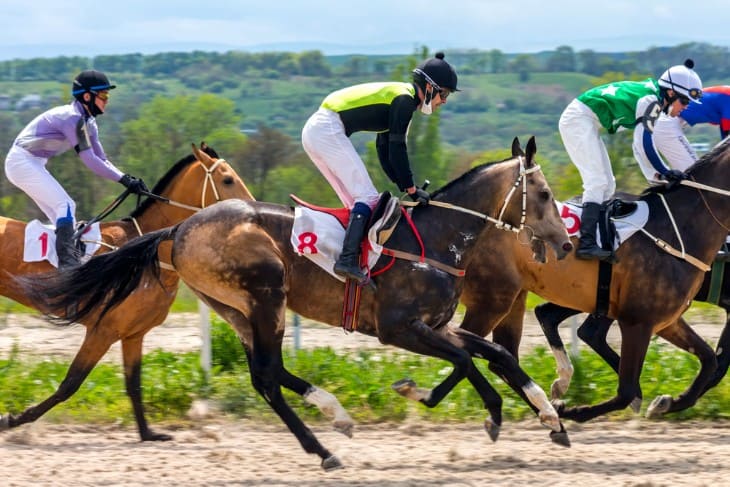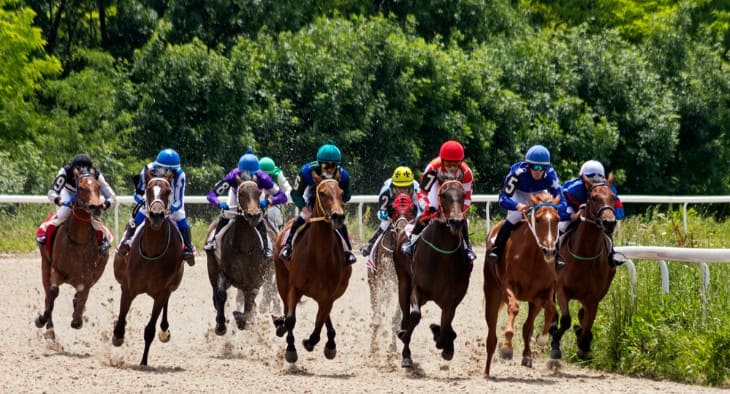- Ethics Behind Modern Horse Racing
- Understanding Grand National: A Test of Stamina and Ethics
- The Role of Regulations in Safeguarding Animal Welfare
- Innovations in Racehorse Care and Training
- The Effect of Public Opinion on Horse Racing
- Challenges and Solutions in Achieving Ethical Racing
- The Future of Horse Racing: Ethical Considerations and Developments
- Conclusion
In the world of sports, horse racing is one of those few events that elicit a lot of enthusiasm and arguments. The debate on the issue revolves around one event, the Grand National which is both filled with history and competition. However, underneath this spectacle lies a central concern; the equilibrium between tradition in sport and animal welfare. This article explores Racing Ethics and Animal Welfare: A Complex World to find out how we can make sure our future for horse racing is humane yet competitive.
Ethics Behind Modern Horse Racing
The modern form of ethical racing means being able to take care of horses that enable race. It’s about ensuring that these animals are protected, safe and well taken care of. This focus on welfare has grown more important as people scrutinise our treatment of animals in sports nowadays.
This involves looking at every aspect of ethical racing. This includes not only what happens on race day but also training them and taking care of them. It is about providing proper rest, the best veterinary care and a safe environment. Such practices ensure that horses are not just entertainment tools but rather athletes in their own right.
An important aspect of ethical racing is safety too. Tracks must be safe for riders as well as horses while equipment must be appropriate for both parties as well. Safety considerations such as better track designs and improved safety gears have made racetracks less dangerous places, thus reducing injuries.
The industry should also be transparent about its practices; it needs to share information on how horses are treated while ensuring rules are followed accordingly. Transparency like this helps build public trust in equine activities by proving the seriousness of animal welfare concerns.
Ethical racing does not only benefit horses but also helps the sport itself. This way, when they see races becoming more ethical, people will support it more often than not. Thus, this guarantees a stronger future for horse racing with tradition blending with the concern for animals.
[promotion:240]
Understanding Grand National: A Test of Stamina and Ethics
The Grand National is not just a race; it is a real test for both horses and jockeys to endure. This celebrated event challenges them through a long, demanding course. It is about not only speed but also endurance as well as the bond between horse and rider. This race puts their training, courage, and resilience to the test.
This race also highlights why it is essential to treat animals ethically. The care of the horses before, during, and after the race is vital. They need the best care possible for the demands of racing like proper rest & dieting or even preparation in general. This means that they should be properly trained, fed and rested before they participate in any racing activity. The aim here is to ensure the fitness of the animals on time for competition.
Safety measures are key to making the Grand National ethical. Organisers will do everything to create safe conditions while constructing a track for this event. Fences are improved and hazards on tracks are minimised thus reducing risk factors involved with horse races. In turn, these actions depict concern for animal well being as well as making races interesting yet harmless.
Ethics in the Grand National also means taking hard decisions. This sometimes means altering ancient practices to ensure the safety of horses. It’s a case of striking the right balance between making the race challenging and not overexposing the horses to danger.
This is where the Grand National comes in, to prove that horse racing can be both exciting and responsible. A good example is how it has developed over time. The Grand National can remain a much-loved event by emphasising horse health and safety while valuing them as living creatures at its core.

The Role of Regulations in Safeguarding Animal Welfare
One such area involves regulatory mechanisms meant to safeguard animals during horse races. These laws ensure that horses are well looked after by humans and that races are carried out honestly without accident. Its primary aim is to protect horses which are considered the heartbeat of this sport.
A major concern among these regulations is horse fitness and health. The vets inspect each animal before it runs in a race for its general physical condition, etcetera; they would otherwise have run if unwell or injured and hurt themselves more seriously than they were already ill or wounded thus ensuring proper treatment and welfare-related care, besides preventing harmful overexertions of the animals’ capacities.
Another aspect included under this legislation concerns track design issues regarding the same regulations incorporated into this regulation including race course designs which must be safe without causing unnecessary risks to both horses as well as jockeys. These involve appropriate surfaces for running as well as ensuring safe obstacles like hurdles or jumps among others. This shows how athletes listen to concerns about animal welfare through changing tracks plus racing conditions.
These training techniques are also monitored closely by authorities. What this does is make certain that what trainers employ does not cause pain to any horse used in racing at any given point in time through these kinder approaches. It encourages trainers to use techniques that are good for the horse’s mental and physical health.
Lastly, these laws ensure that there would be no one who could escape from penalties. For instance, these may include fines or suspensions for individuals who mishandle animals. Such punishment shows the importance of animals’ lives in racing.
Innovations in Racehorse Care and Training
Caring and training racehorses have seen great transformations in the realm of horse racing. New ways are making a lot of difference in caring for and training them. These inventions help horses to stay healthy and perform well during competitions.
A breakthrough happened when it came to checking on racehorse health. Nowadays advanced technology is used by vets like scanners which can look inside a horse without surgery (Giles). It means issues are found and treated earlier to prevent further complications. Horse welfare gains more through this single move.
Also, training methods have improved over time. Trainers now use exercises that do not affect a horse’s conformation negatively. They concentrate on developing muscle power and endurance while avoiding strain injuries among other benefits (Walker). This strategy has led to reduced incidences of injury occurrences while preparing horses adequately for races.
Another innovation is in the field of rest and recovery. Just like human beings, horses also require time to recover after work. New facilities offer special treatments such as hydrotherapy. This helps horses to recover quickly and keep their muscles and bones in good condition.
Diet and nutrition have also seen advances. Horse health experts have developed diets tailored just for racehorses. These diets will provide more power for the horse thus maintaining its good health over time.
This shows a great commitment towards making horse racing better for the animals that are involved. The world of racing is applying new science and technology to ensure that horses get what they deserve care-wise. This is some good news for the game as well as the amazing creatures enabling it.

The Effect of Public Opinion on Horse Racing
In the world of horse racing, public opinion plays an important role. It can greatly affect how people perceive this sport. The subsequent points highlight some of the ways through which public opinion influences horse racing:
- Growing Concerns about Animal Welfare: Nowadays, there is growing concern about how animals are handled. This has extended to horse racing too. If the public believes that horses are well treated, then they may support it most probably. In other words, races need to show they give priority to horses’ welfare first of all. Events like Grand National are always scrutinised because people want assurances concerning the safety and health of these animals.
- Social Media’s Influence: Social media has changed how information spreads nowadays. Incidents related to horse racing go viral very fast if negative while helping distort an image once it happens; on the contrary, good stories can enhance its reputation though this section shall discuss their impact on our perception towards the sport below.
- Demand for Transparency: Fans in today’s world expect transparency from their favourite sports. In horse racing, this means it is crucial to be transparent about how the animals are taken care of. Transparently telling people about what has been done to take care of animals increases trust in such a sport as horse racing. Such racing organisations that are willing to share information on how they manage animal welfare tend to be more favoured by the public.
- Sponsorship and Funding Implications: Public perception can affect sponsorship and funding as well. Companies prefer sporting ventures with a good image. In case horse racing is considered unethical, it may lose financial support. This necessitates a greater need for the game’s commitment to ethical practices and animal care.
Challenges and Solutions in Achieving Ethical Racing
However, achieving ethical racing is not all smooth sailing since there are obstacles that exist hence there have to be ways through which these challenges can be overcome. The following are some of the main problems and possible remedies:
- The balance between preserving tradition and modern welfare standards: Horse racing has a long history and is steeped in tradition. This can sometimes make it difficult to implement changes that are good for animals. Education and advocacy are the answers. By showing the benefits of new methods and technologies for horses, stakeholders could thus be encouraged to adopt modern practices that improve animal welfare while respecting the sporting culture.
- Economic pressure: Racing is also a business and sometimes financial worries compromise animal care. Importantly, however, investments in welfare can end up being economically beneficial. Healthy, well-taken care of horses perform better and last longer leading to more secure earnings for individuals involved in the horse racing establishment. Moreover, there would be an increased number of followers as well as sponsors because they have a positive public perception about ethical practices on their side which is not only very important but also a major advantage.
- Resistance to change: Change can be difficult, especially in a conservative environment like racing horses. This challenge can only be overcome through education and transparency. To win over sceptics provide clear evidence of the benefits of using such ethical practices not only for the horses but also how it appears before other people including those who unknowingly or knowingly support the betting business. For instance, one may engage with racing communities using seminars, workshops, forums etc., to create a more open attitude towards change.
- Lack of awareness: Sometimes insiders simply do not understand how this affects animals’ lives or what ways are best for them during training or competing activities. In this case, specific programs to train trainers, jockeys and owners will help much through targeted educational campaigns aimed at developing awareness around their rights as stakeholders in this sector; an essential condition given that knowledge is power as informed stakeholders tend to prioritise horses' welfare first.
The Future of Horse Racing: Ethical Considerations and Developments
There are exciting possibilities ahead for horse racing when we consider ethical considerations and developments. Horse racing is adapting to these concerns as society becomes more aware of animal welfare. This in turn means that there is a big shift in the way horses are treated and races are organised.
This future has much technological involvement. For instance, there have been inventions which make it easy to maintain better health for horses. One example is wearable tech that monitors a horse’s heart rate and stress levels. That way, trainers will be able to understand them better and injuries can be prevented by trainers altogether.
Training methods are also being revolutionised. There is now a movement toward more natural, humane approaches to training racehorses. The focus shifts from simply making the horse do what humans want it to do towards understanding its behaviour and building a strong relationship between the horse and trainer. These measures go beyond benefitting only the horses but also enhance their performance during races.
In addition, the sport is having more discussions regarding animal welfare matters than ever before because everybody from horse owners to supporters is concerned about how this could be made possible so that the best interests of these animals are taken care of in terms of well-being, diet etcetera. As such, there have been some positive changes brought about by this openness as well as increased support for ethical practices.
Sustainability is another key area. Racing is looking at ways through which it can become less destructive to the environment. For example, land should be fragmented appropriately while renewable energy should be used at racecourses among others. Such steps demonstrate commitment towards a greener future.
Conclusion
The message is enhanced in the Grand National, which represents the most intense excitement and traditionalism associated with horseracing. However, Racing Ethics and Animal Welfare are more important as we move ahead. Horse racing may keep its tradition alive by improving regulations, and care, and involving the community to dignify its equine athletes.
Ethical racing demands equilibrium, novelty and admiration that respects both life and competition. The bright future of this game can only be realised if these fundamental concepts are embraced.






